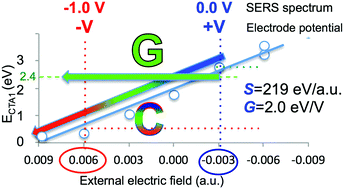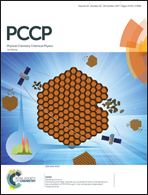Comment on “Elucidation of charge-transfer SERS selection rules by considering the excited state properties and the role of electrode potential” by M. Mohammadpour, M. H. Khodabandeh, L. Visscher and Z. Jamshidi, Phys. Chem. Chem. Phys., 2017, 19, 7833†
Abstract
The differences between alternative approaches for quantifying the complex effect of the electronic structure of charged metal–molecule hybrids in SERS (the so-called chemical enhancement mechanism) are highlighted. The discussion is focussed on the predictions obtained by using different methodological tools for modelling the role of the electrode potential in the SERS relative intensities. Finite electric fields are used in the commented paper for this purpose, but we have found some inconsistences in the results and the method for calculating the Raman intensities is not made sufficiently clear, which prevents the assessment of the results.



 Please wait while we load your content...
Please wait while we load your content...